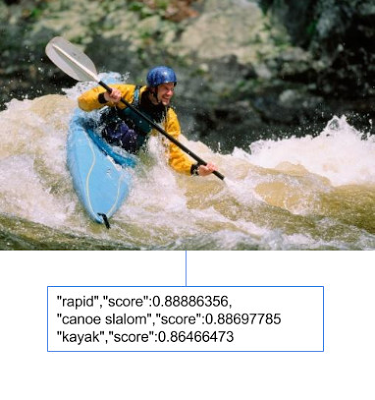
Developers can build applications that can see and understand what’s in images in Google Photos with the release of Cloud Vision API. It’s going to help all kinds of developers who make applications, according to Google’s blog.
Using a REST API and advances in machine learning, Cloud Vision API can classify images, detect faces, and recognize printed words in different languages. Developers can also build metadata on their image catalog, moderate offensive content, and enable marketing scenarios through image sentiment analysis, the blog said. In future phases, Google will add support for integrating with Google Cloud Storage.
Some of the main features in Google Cloud Vision API include label/entity detection, where it can pick out the dominant entity in an image, as well as optical character recognition, where the API provides automatic language identification and supports a wide variety of languages.
EFF makes complaint about Google tracking student info
The Electronic Frontier Foundation (EFF) has launched a campaign called “Spying on Students” after it filed a complaint with the Federal Trade Commission (FTC) against Google for collecting and data mining students’ personal information.
The campaign will raise awareness about the privacy risks of school-supplied electronic devices and software, according to the EFF release. It examined Chromebooks sold to schools that use Google Apps for Education and found that Google’s sync feature for the Chrome browser is enabled by default, which means the company can track and store data for non-advertising purposes. The EFF wrote that many parents are unable to prevent Google’s data collection, since they have to use the Chromebooks at school. The EFF also said that Google assured the EFF that it will soon disable a setting on school Chromebooks that collects Chrome Sync data, but the EFF wants it to go further to protect the privacy of children.
Corona and Perk join forces
Corona Labs has made its Corona SDK available for free, allowing developers to create cross-platform applications. Corona has joined Perk, a rewards platform targeting consumers, moving to the “next chapter” for Corona, as Perk president and co-founder Roj Niyogi wrote in a blog post. Corona will now support more plug-ins and will soon launch Corona Ads: a way to introduce monetization via display and video ads into Corona apps.
Superfeedr welcomes Google Feed API users
Many websites are broken because of Google’s recent shutdown of its Feed API after six months of deprecation. Superfeedr is stepping in as an alternative, according to its blog.
Superfeedr wrote yesterday that it can achieve what Google’s API did. Superfeedr charges for its services, but there is a free tier available. A common request that Superfeedr is getting is for loading feeds using JavaScript and jQuery, explaining what to do in detail on its blog. Some of the other things developers can do with Superfeedr include retrieving multiple feeds in one single call, combining feeds, getting real-time updates in JavaScript, and adding a feed reader to any page.
Patents show Amazon wants to do something with AR
A couple of Amazon’s recently approved patents show that the company wants to turn augmented reality into more than just headsets. The patent for “object tracking” shows a system of projectors and cameras beaming virtual reality onto real objects and tracking the user’s hand as they interact. The other patent is called “reflector-based depth mapping,” which would use a projector to transform a room into something like a holodeck. It’s just a patent at the moment, but be on the lookout for an actual prototype in the near future.
Twitter gives developers tvOS tools
Twitter has announced new tools for tvOS developers. The company has released Digits for tvOS in order to make signing into Apple TV apps easier. Digits for tvOS uses device authorization, which provides a short alphanumeric code users can use to authorize their accounts.
In addition, the company released Crashlytics for tvOS, a reporting solution designed to give developers visibility into their Apple TV’s app’s performance and stability. Crashlytics will notify developers in real time when there is an issue they need to address.
Microsoft wants Windows users to switch to Windows 10
While a majority of Windows users have already made the switch to Windows 10, there are still some using older versions of the operating system. In its latest update to Windows 8.1, Windows RT 8.1 and Windows Server 2012 R2, Microsoft wants to make it easier to make the switch. The update provides support for additional upgrade scenarios in order to provide a smoother experience when upgrading to Windows 10, and improves Microsoft’s ability to monitor the quality of the upgrade experience.
Similar updates are available for Windows 7 and Windows Server 2008.
More information is available here.





